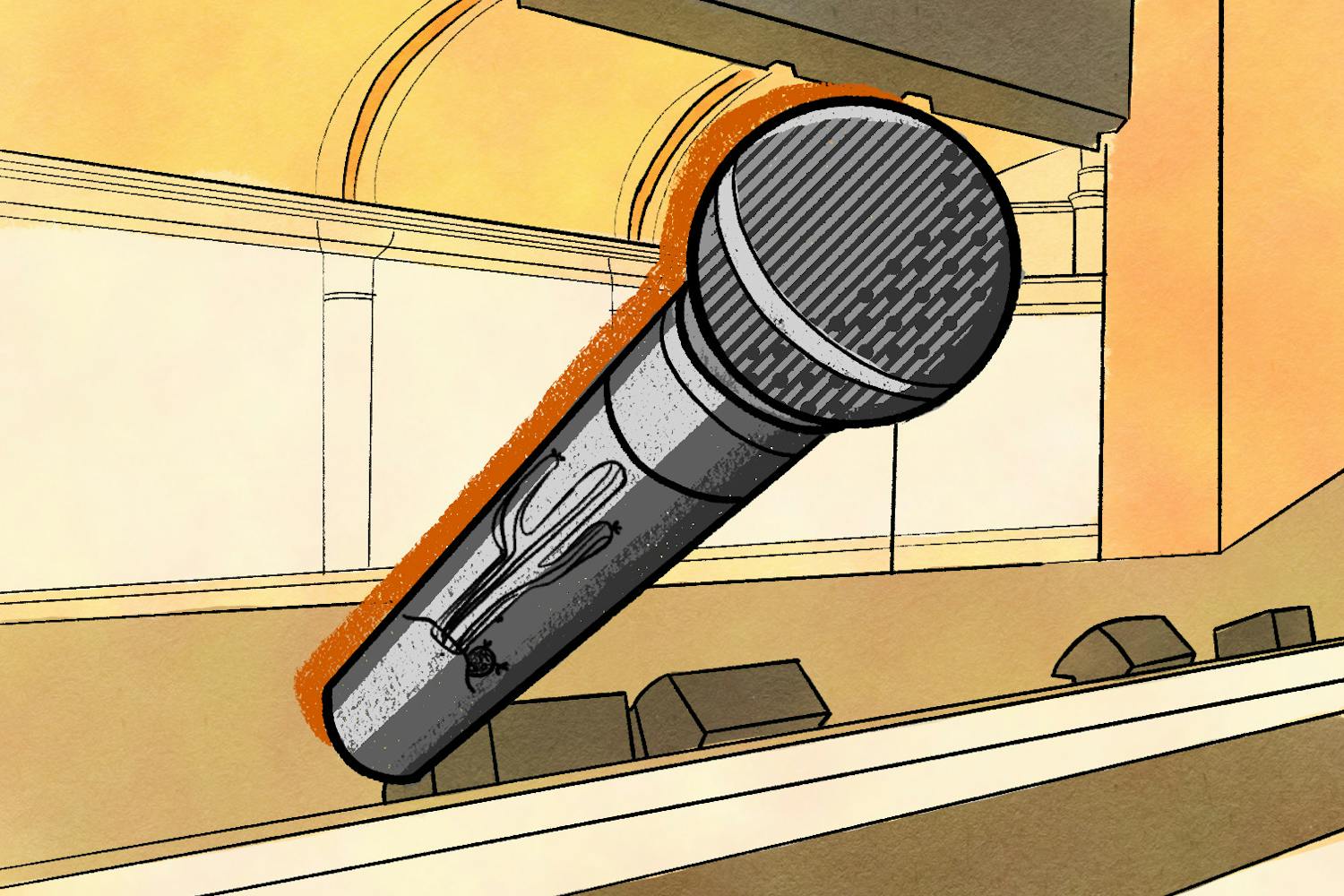Several people once flew through a tornado in the comfort of their own homes – literally – in a Wizard of Oz-esque fashion. There is a slight possibility that restaurants are able to pass pork bung – that is, pig rectum – off as calamari. After the Egyptian riots, compromises between political decisions became the most difficult when discussing the future of art in the country.
Summarizing these stories, however, does no justice to the humor or precision or sympathy with which they are told. The stories all come from the popular Chicago-based radio show, "This American Life," and they were all told live by the show’s host and producer Ira Glass on Saturday night at the Scottsdale Center for the Performing Arts.
At surface level, "This American Life" is an hour-long show distributed by Public Radio International that tells personal stories sharing a common weekly theme. It began in 1995 and has since had weekly themes such as self-improvement, animal sacrifice and brushes with death. But it’s so much more than personalized journalism. The show attracts 1.8 million listeners around the country, because it captures the imagination and stirs in its listeners empathy and anger, fear and inspiration. It makes its listeners feel human. During Saturday night’s, “Reinventing Radio: An Evening With Ira Glass,” the show’s beloved host explained the magic in "This American Life."
The auditorium in the Scottsdale Center for the Performing Arts is lined with large mahogany wood slabs, their geometric patterns scattered along the upper walls. The tall speakers mounted in the upper corners of the room played Penguin Cafe Orchestra’s “Perpetuum Mobile” prior to the show. People in the audience discussed recent "This American Life" episodes, particularly the recent story revealing Glass’s dog as a highly allergic and slightly psychotic pet.
But the scene soon didn’t matter.
The lights were cut, the speakers silenced and the crowded auditorium quieted until a familiar voice broke the suspense.
“Well, the first thing you have to understand is that it’s radio.”
The lights remained off even after the laughter subsided. The glow from a tablet moved about in the dark as Ira’s recognizable voice praised radio.
“Television is limited to what you see," he said. "There’s an intimacy to hearing somebody’s voice; there’s an intimacy to radio.”
The lights were eventually turned back on in order to prove that this was Glass speaking, and not his sound-alike Fred Armisen, the "Saturday Night Live" and "Portlandia" star. Glass was indeed present, wearing a crisp gray suit and an orange-striped tie. He confessed that he does not know much about Arizona.
“All I know about your state is the politics and the temperature. Does ‘Breaking Bad’ take place here?” he asked the audience.
The hour-and-a-half show that followed could be defined as part philosophy, part radio lecture, part stand-up comedy, but all inspirational. Glass is funny. Hardly a minute went by without an outburst of laughing approval. The show oozed charm.
He compared the unconventionally casual journalistic style that defines "This American Life" to traditionally stiff journalism. To Ira, there’s “a strict segregation between the serious and the funny” in current journalism.
But this segregation removes the human qualities in the story. Funny moments can be found in even the most serious stories, and to Ira, leaving out this good stuff leaves out the stuff that makes life worth living.
To follow this claim, Ira recapped a particularly gruesome story found on episode 476 (“What Doesn’t Kill You”) that recounts a violent shark attack against a 13-year-old girl in New Zealand. He warned the audience that this part of the show has caused fainting, blacking out and queasiness in the past. So Glass played the recording from his tablet, swiping in sounds and stopping the recording as he went along, adding precise elements to his captivating storytelling.
The story’s content was graphic (those interested can listen to the episode online); yet, throughout the grisly details, the crowd continued laughing intermittently at Glass’ jokes. He was proving his own point, that keeping humor intact makes life seem more livable.
From here, Glass talked about his own development as a storyteller before laying out story structure. He was a semiotics major to his parents’ disappointment; they wanted him to be a doctor, because (as he said) they were Jewish. Glass began working as an intern for National Public Radio when he was 19 years old, but he didn’t get good at reporting until his late twenties.
He would play clips from the show to demonstrate that good stories contain surprise. They have action, like any story would have, but most important, they give meaning.
“Every story is asking questions in the beginning that it’s going to answer along the way,” he said.
Whereas in drama we are left to determine this universal “something” for ourselves, in radio specifically, this “something” that we seek for can be revealed in a sudden, enlightening moment.
He read excerpts from David Rakoff’s book that describe this story structure (action, action, action, meaning) before discussing the laws against “inappropriate” words on public radio. It was reminiscent of George Carlin’s “Seven Words” skit in a sense that it generated just about as much laughter.
By the time the show was over, it became clear that Glass practices what he preaches. The show was mesmerizing, because he structured it much like a "This American Life" episode: ripe with rich stories, dialogue and meaning. Fans of the radio show can now put a face to the voice. Ira ended the show by joking about his popularity.
“I’m not that popular," Glass said. "People outside this room wouldn’t recognize me if they saw me. Like, nobody on the airplane recognized me.”
His 1.8 million listeners might not recognize him by sight, but the moment he starts speaking? Well, that’s a different story.
Reach the reporter at jconigli@asu.edu.





